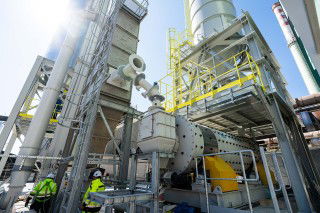Cemtech’s virtual event, Decarbonising the Cement Industry, opened on Monday, 20 September 2021 with around 2000 attendees from over 120 countries – a clear indication of the challenge facing producers to respond to new rules and regulations regarding decarbonisation, whilst also meeting stakeholder expectations.
Magali Anderson, chief sustainability and innovation officer, Holcim Ltd, opened the first session by reiterating the net zero pledge made by the company one year ago, while highlighting the global challenges for a company with 2300 operating sites across more than 70 countries. In its drive to become the global leader in innovative and sustainable building solutions, Holcim believes we need to look at the full built environment, from the foundations to the rooftops, as well as repair and renovation, modular structures and recycling, to maximise the decarbonisation process.
The launch of its green products, ECOPact and ECOPlanet, form part of its pledge and already a clear appetite is being seen with ECOPact accounting for more than five per cent of concrete sales in India alone in the first six months. The group is also actively working on more than 30 carbon capture utilisation and storage (CCUS) projects across 12 countries.
Davide Zampini of Cemex also took a reflective look at the progress made by the industry so far, from the first use of slag in 1860 to the low-carbon products being developed today, as well as how the compressive strength of concretes in Italy has changed over the decades and why. He explained the company’s slogan, Future In Action, with a new target of 475kg of CO2/t of cementitious material by 2030, while also looking at the LEILAC project, solar-driven cement pyro-processing in collaboration with Synhelion, its gravity energy storage system and the future role of recarbonisation.
Paul Roger of Exane BNP Paribas returned to cement’s 7-9 per cent role in global CO2 emissions, highlighting that 80 per cent of the value chain emissions come from clinker production. His analysis included CCUS schemes, the number of which have skyrocketed in recent years, the impact these technologies will have on cement prices, with potential rises of 26-70 per cent, and the future role of novel and blended cements. Although he predicts mid-single digit, like-for-like EBITDA growth in 2022, cost inflation is spiking more than he expected so the price rises announced at the start of next year will be key to the final outlook.
To follow the rest of the event, register for free here: https://us02web.zoom.us/webinar/register/WN_lMVINhEGTz-ma3UKYlS9Hw
